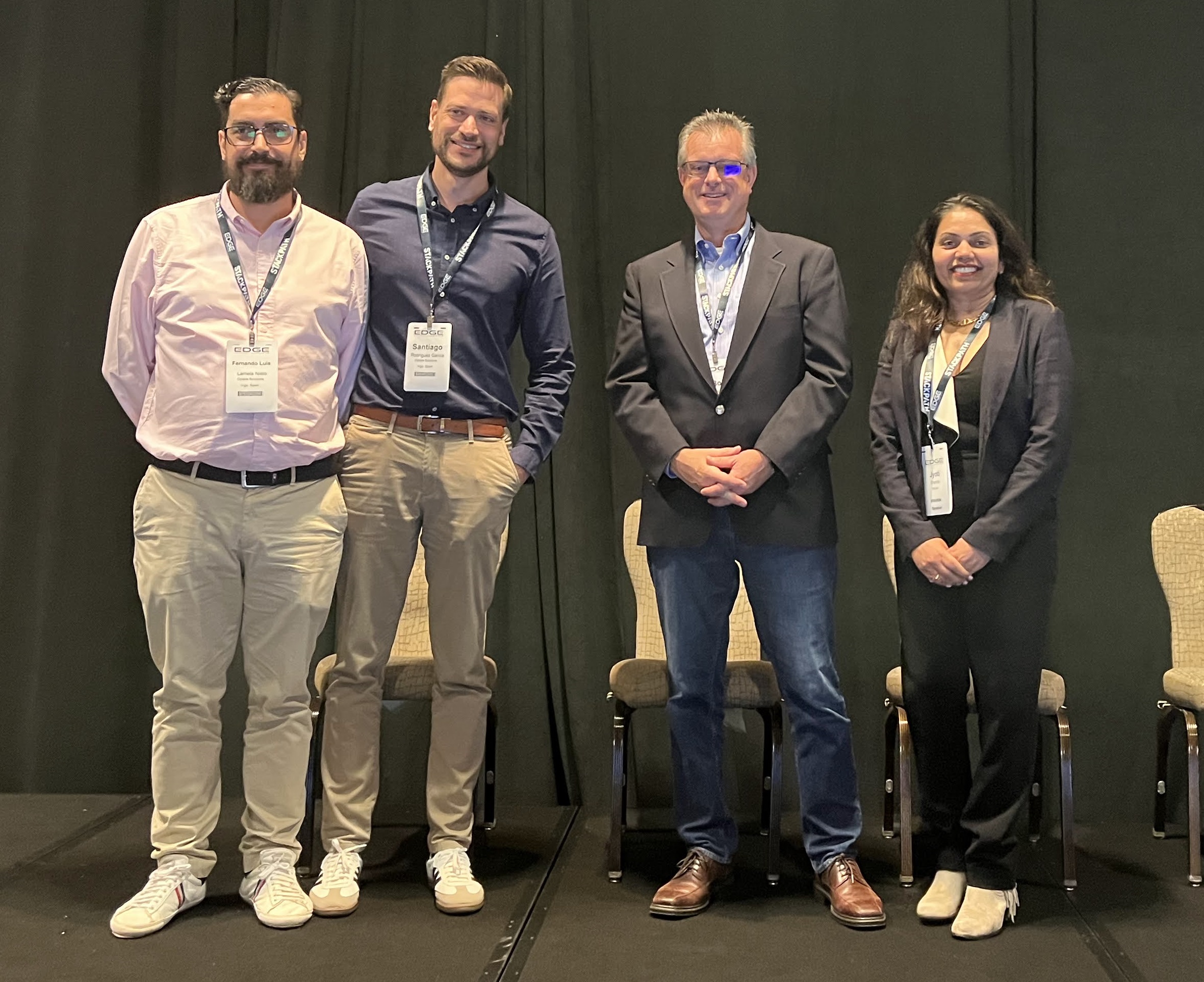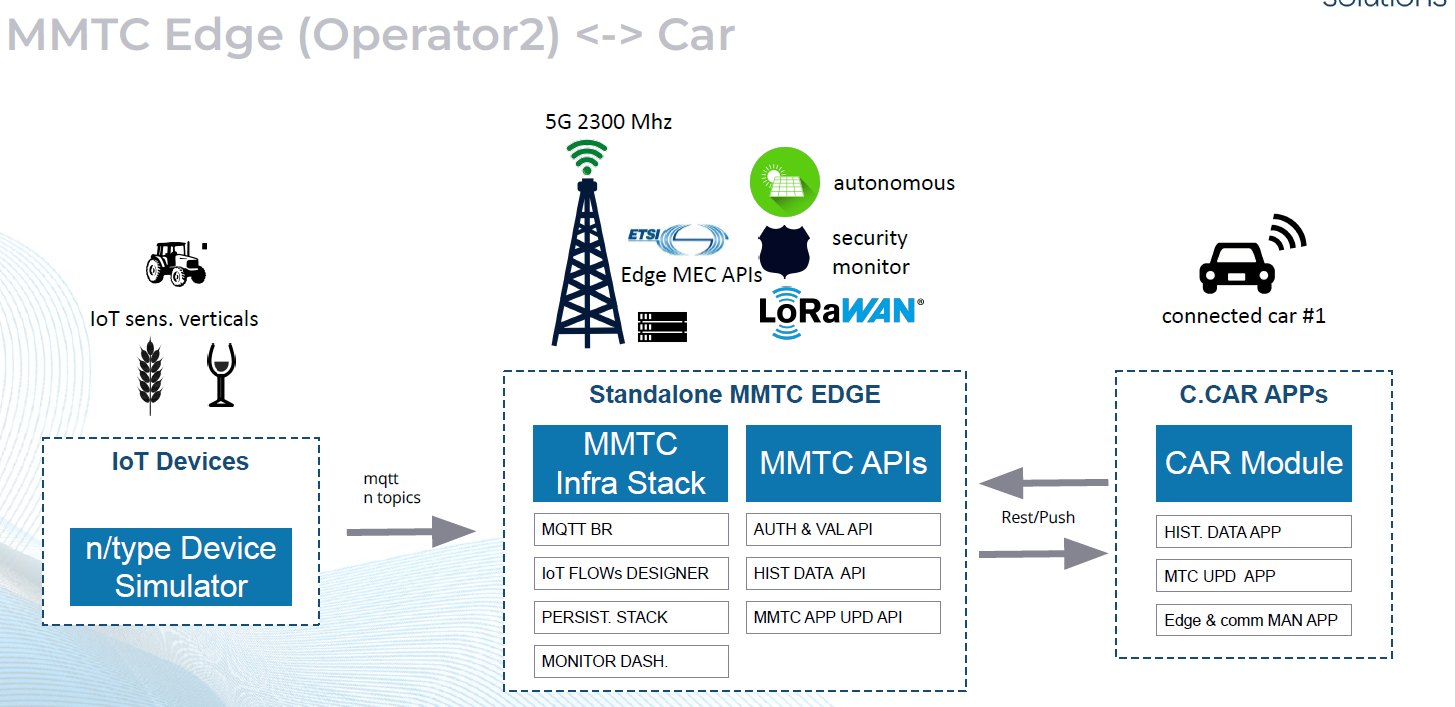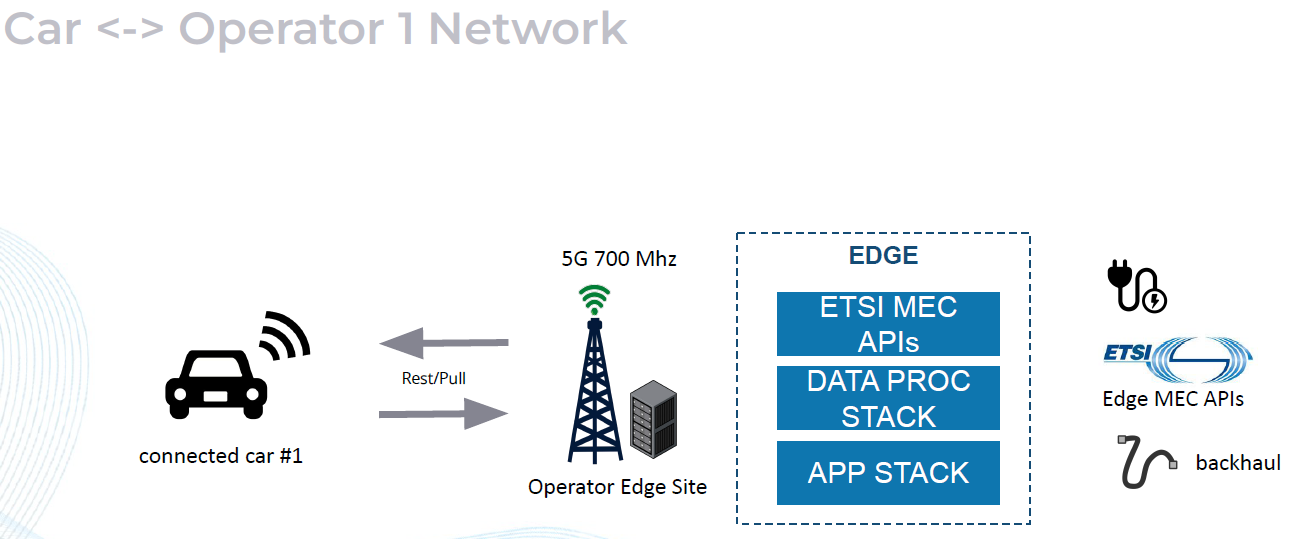Hack2022 3rd Prize: Difference between revisions
From MECwiki
No edit summary |
No edit summary |
||
| Line 30: | Line 30: | ||
<div class="panel-body"> | <div class="panel-body"> | ||
[[File:Edge Hackathon 2022 - Automotive Special Prize.jpg| | [[File:Edge Hackathon 2022 - Automotive Special Prize.jpg|600px|center|top|class=img-responsive]] | ||
</div> | </div> | ||
<div class="panel-footer">Santiago Rodriguez & Fernando Lamela with Jury members Bob Gazda (InterDigital) and Jyoti Sharma (5GAA Board/Verizon)</div> | <div class="panel-footer">Santiago Rodriguez & Fernando Lamela with Jury members Bob Gazda (InterDigital) and Jyoti Sharma (5GAA Board/Verizon)</div> | ||
| Line 41: | Line 41: | ||
= Introduction = | = Introduction = | ||
<p> | <p> | ||
* A connected vehicle (car) that with the support of 5G, MEC and artificial intelligence technologies is | * A connected vehicle (car) that with the support of 5G, MEC and artificial intelligence technologies is able to capture information from the surrounding environment and feed a smart city platform with this information which can predict and adopt several actions for the good of people. | ||
able to capture information from the surrounding environment and feed a smart city platform with this | |||
information which can predict and adopt several actions for the good of people. | |||
[[File:hack2022-optare- | [[File:hack2022-optare-architecture1.png|800px|center|top|class=img-responsive]] | ||
<br> | |||
* The information retrieved by the car and sent to the platform is collected by three different ways: | |||
<ul> | |||
<li>camera: the car is equipped with a camera that sends a video stream to the edge over which is executed an AI inference algorithm to detect several patterns and generate information packages relevant to the smart city platform</li> | |||
<li>sensors: the car is equipped with several sensors (temperature, humidity, …) that can create heat maps with this information to the smart city </li> | |||
heat maps with this information to the smart city | |||
* Every information contribution to the smart city could be rewarded with points that can be exchanged | <li>the smart city itself. In regions/areas where the city information sources are isolated (low power, low signal quality, bad coverage due maintenance, weather conditions, etc), the car can act like a link between the information source and the smart city platform, uploading this information in the next available coverage area crossed by the car in its route.</li> | ||
with tax discounts, for example, guaranteeing the participation of the people establishing missions with | </ul> | ||
a different degree of value. Every connected car can register on the smart city platform and provide | * Every information contribution to the smart city could be rewarded with points that can be exchanged with tax discounts, for example, guaranteeing the participation of the people establishing missions with a different degree of value. Every connected car can register on the smart city platform and provide several information about the city and people. | ||
several information about the city and people. | |||
</p> | </p> | ||
= | = Architecture = | ||
== MMTC Edge (Operator2) <-> Car == | |||
[[File:hack2022-optare-architecture2.png|800px|center|top|class=img-responsive]] | |||
== Car <-> Operator 1 Network == | |||
[[File:hack2022-optare-architecture3.png|800px|center|top|class=img-responsive]] | |||
<!-- | <!-- | ||
= Component view = | |||
[[File:hack2022-optare-architecture2.png|800px|center|top|class=img-responsive]] | |||
<br> | |||
<br> | |||
[[File:hack2022-optare-architecture2.png|800px|center|top|class=img-responsive]] | |||
* Full details [//mecwiki.etsi.org/images/MEC_Service_Federation_for_Location-aware_IoT_with_DevOps_MEC_Infra_Orchestration_v3.pdf here] | * Full details [//mecwiki.etsi.org/images/MEC_Service_Federation_for_Location-aware_IoT_with_DevOps_MEC_Infra_Orchestration_v3.pdf here] | ||
Revision as of 11:14, 23 November 2022
3rd Prize Award & Automotive special prize
K.I.T.T Knowledge in the traffic
Team
Team Pedraforca from Optare Solutions
- Xose Ramon Sousa Vazquez
- Santiago Rodriguez Garcia
- Fernando Lamela Nieto
Introduction
- A connected vehicle (car) that with the support of 5G, MEC and artificial intelligence technologies is able to capture information from the surrounding environment and feed a smart city platform with this information which can predict and adopt several actions for the good of people.
- The information retrieved by the car and sent to the platform is collected by three different ways:
- camera: the car is equipped with a camera that sends a video stream to the edge over which is executed an AI inference algorithm to detect several patterns and generate information packages relevant to the smart city platform
- sensors: the car is equipped with several sensors (temperature, humidity, …) that can create heat maps with this information to the smart city
- the smart city itself. In regions/areas where the city information sources are isolated (low power, low signal quality, bad coverage due maintenance, weather conditions, etc), the car can act like a link between the information source and the smart city platform, uploading this information in the next available coverage area crossed by the car in its route.
- Every information contribution to the smart city could be rewarded with points that can be exchanged with tax discounts, for example, guaranteeing the participation of the people establishing missions with a different degree of value. Every connected car can register on the smart city platform and provide several information about the city and people.
Architecture
MMTC Edge (Operator2) <-> Car


